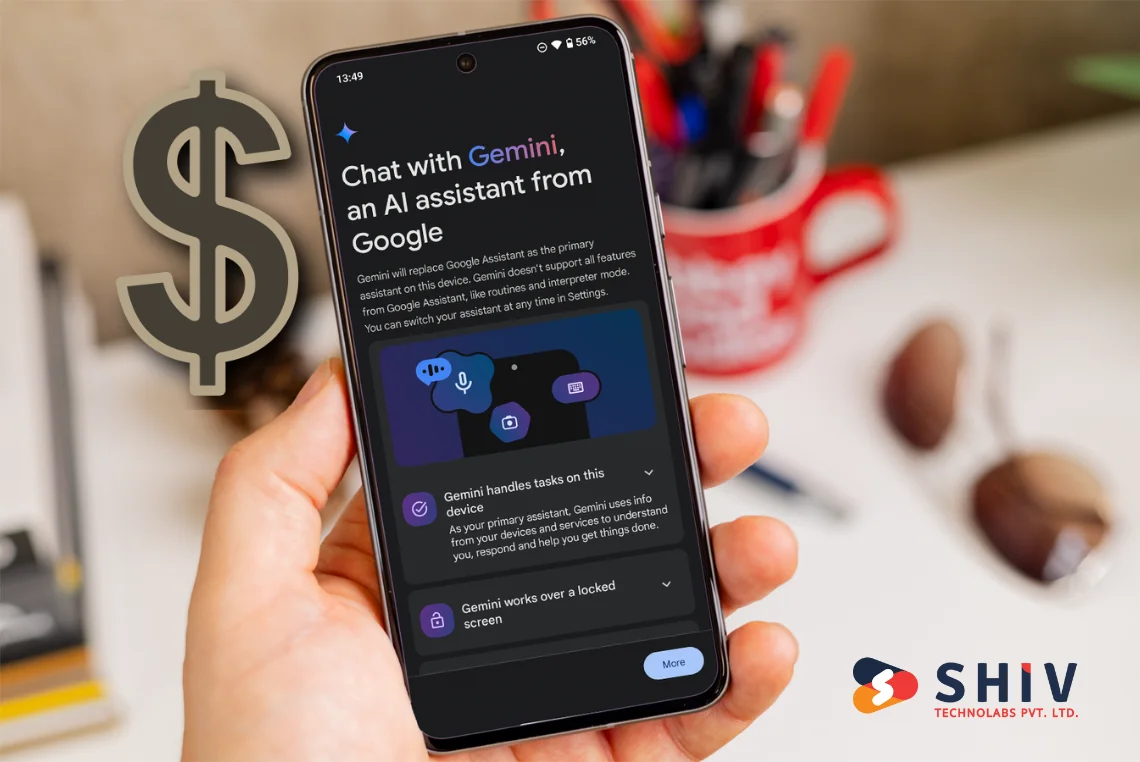Table of Contents
Artificial Intelligence (AI) has rapidly become an integral part of modern technology, with applications spanning various industries. Creating an AI app is a complex yet rewarding process that involves several crucial steps. This guide will walk you through the journey of building an AI app, providing detailed insights at each stage, from initial planning to final deployment.
1. Defining Your AI App’s Purpose and Goals

The first step in creating an AI app is to define its purpose. What problem will your app solve? Who is your target audience? These questions are fundamental in shaping the direction of your project.
# Identify a Clear Problem
Start by pinpointing a specific problem that your AI app will address. Whether it’s automating a mundane task, improving decision-making processes, or providing personalized experiences, having a clear objective is crucial. For instance, if you’re developing an AI app for healthcare, you might focus on improving diagnostic accuracy or streamlining patient data management.
# Set Measurable Goals
Once the problem is defined, set measurable goals for your app. These goals will guide the development process and help assess the app’s success post-launch. For example, if your app is designed to assist in customer service, a measurable goal could be reducing response times by a certain percentage.
2. Conducting Market Research

Before diving into development, it’s essential to conduct thorough market research. Understanding the competitive landscape and user expectations will provide valuable insights that can shape your app’s features and functionality.
# Analyze Competitors
Look at existing AI apps that serve a similar purpose. What are their strengths and weaknesses? How can your app offer something unique? For example, if there are already several AI-based personal finance apps, consider how your app could offer more accurate spending predictions or a more user-friendly interface.
# Understand Your Audience
Identify who will use your app and what they expect from it. User surveys, interviews, and focus groups can provide direct insights into what potential users need. Understanding your audience will help in designing an app that is both useful and engaging.
3. Choosing the Right AI Technology
Selecting the right technology is critical to the success of your AI app. The choice of algorithms, frameworks, and tools will significantly impact the app’s performance, scalability, and future updates.
# Select the Appropriate AI Model
The choice of AI model depends on the type of problem you’re solving:
- Supervised Learning: Ideal for tasks where historical data can be used to predict future outcomes, such as email spam detection.
- Unsupervised Learning: Suitable for discovering hidden patterns in data, like customer segmentation.
- Reinforcement Learning: Best for situations where the AI can learn from its own actions, such as in game development or robotics.
# Choose the Right Frameworks and Libraries
Popular AI frameworks like TensorFlow, PyTorch, and Scikit-learn provide the necessary tools to develop and train models. When seeking AI/ML development services, your choice will depend on factors like ease of use, community support, and specific project requirements. For instance, TensorFlow might be preferable for large-scale projects requiring extensive computational power, while Scikit-learn could be suitable for simpler applications.
4. Designing the App’s Architecture
The architecture of your AI app plays a pivotal role in how it functions. This includes both the back-end, where the AI processing occurs, and the front-end, which the user interacts with.
# Back-End Infrastructure
The back-end is where your AI models will run. Depending on the complexity of your app, you might need to consider cloud-based solutions like AWS, Google Cloud, or Microsoft Azure. These platforms offer scalable computing power and storage, which are essential for handling large datasets and intensive processing tasks.
For example, if you’re developing an AI app that processes real-time video feeds, you’ll need robust back-end infrastructure to handle the data processing without latency issues.
# Front-End Design
The front-end is what users will interact with. It’s crucial to design a user-friendly interface that effectively communicates the AI’s capabilities. Tools like React, Angular, or Vue.js can be used to build dynamic and responsive interfaces.
Consider the example of an AI-powered chatbot. The front-end should be designed to handle natural language inputs effectively, providing users with clear and concise responses.
5. Data Collection and Preprocessing
Data is the lifeblood of any AI application. The quality and quantity of your data will directly impact the performance of your AI models.
# Data Collection
Start by collecting relevant data that your AI models will need to learn and make predictions. The data can come from various sources, including databases, APIs, or even real-time user inputs. For example, if you’re building an AI app for predicting stock prices, you’ll need historical financial data, news articles, and other relevant information.
# Data Preprocessing
Raw data is often messy and needs to be cleaned and organized before it can be used. This involves handling missing values, removing duplicates, and normalizing the data. Proper data preprocessing ensures that your AI models receive accurate and useful information.
For instance, in a sentiment analysis app, text data would need to be cleaned of any irrelevant characters, and words would need to be tokenized to make them understandable by the AI model.
6. Training the AI Models
Training is where your AI app starts to take shape. This process involves feeding your data into the chosen AI model and allowing it to learn patterns and make predictions.
# Split Your Data
To train your model effectively, you need to split your data into training, validation, and testing sets. The training set is used to teach the model, while the validation set helps fine-tune it. The testing set is used to evaluate the model’s performance.
For example, if you’re developing an AI app for image recognition, you might use 70% of your data for training, 15% for validation, and 15% for testing.
# Monitor and Adjust
During training, it’s crucial to monitor the model’s performance and adjust parameters as needed. This might involve tweaking the learning rate, adjusting the number of layers in a neural network, or changing the activation functions. The goal is to minimize errors and improve accuracy.
7. Evaluating and Testing
Once your AI model is trained, it’s time to evaluate its performance. Testing ensures that your app will function correctly in real-world scenarios.
# Performance Metrics
Evaluate your model using appropriate metrics such as accuracy, precision, recall, and F1-score. These metrics will give you a clear understanding of how well your model performs and where it might need improvement.
For example, in a fraud detection app, you might focus on precision to minimize false positives, ensuring that genuine transactions aren’t flagged incorrectly.
# Real-World Testing
Test your app in a real-world environment with actual users. This can help identify issues that weren’t apparent during development, such as how the app handles unexpected inputs or how it performs under heavy load.
8. Integrating AI into the App
Once your AI model is trained and tested, the next step is to integrate it into your app. This involves connecting the model with the app’s interface and ensuring that it can process real-time data inputs.
# API Integration
One common method is to use APIs to connect the AI model with your app. For instance, if you’re using a cloud-based AI model, you can create an API that your app can call to send data and receive predictions.
# Edge Computing
In some cases, especially where latency is a concern, you might need to implement edge computing. This means running AI models locally on the user’s device rather than relying on cloud servers. For example, a mobile AI app that needs to operate offline might use edge computing to run models directly on the device.
9. User Experience and Feedback Loop
Creating an AI app isn’t just about the technology; it’s also about how users interact with it. Ensuring a positive user experience (UX) is vital to the app’s success.
# User Interface (UI) Design
A well-designed UI makes your app accessible and enjoyable to use. This includes clear instructions, intuitive navigation, and responsive design. For an AI-powered fitness app, for instance, the UI should clearly display workout recommendations and progress tracking in a way that’s easy to understand.
# Feedback Mechanisms
Incorporate feedback mechanisms that allow users to report issues or suggest improvements. This could be as simple as a feedback form within the app or more sophisticated methods like monitoring usage patterns to identify pain points.
10. Continuous Improvement and Updates
The AI landscape is constantly evolving, and your app should evolve with it. Continuous improvement involves regularly updating your AI models and app features based on new data and user feedback.
# Model Retraining
As more data becomes available, you may need to retrain your AI models to maintain or improve their accuracy. For example, an AI app used in a dynamic field like finance would need regular updates to account for new market trends.
# Feature Enhancements
Keep your app competitive by adding new features and refining existing ones. This could involve incorporating more advanced AI techniques or simply improving the app’s usability based on user feedback.
11. Launching the AI App
With everything in place, it’s time to launch your AI app. This involves preparing for deployment, marketing the app, and providing ongoing support.
# Deployment Strategies
Decide whether you will release the app on a specific platform (like iOS or Android) or across multiple platforms. Make sure that your back-end infrastructure can manage the expected load, and have a plan ready for scaling up if necessary. For cloud-based apps, a resilient server infrastructure is crucial, particularly if you anticipate high traffic.
In the case of a phased launch, you might start with a limited beta release to gather feedback and make any necessary adjustments before a full-scale launch.
# Marketing and Promotion
Develop a marketing strategy to promote your app. Utilize channels like social media, influencer partnerships, and app store optimization to reach your target audience. Highlight the unique value your AI app offers compared to competitors.
# Ongoing Support
Launching an app is just the beginning. To keep users engaged and satisfied, provide ongoing support. This includes responding to user feedback, fixing bugs, and rolling out updates to introduce new features or improve existing ones. An effective support strategy might involve setting up a help desk, creating a knowledge base, and offering regular updates to keep users informed about new developments.
12. Post-Launch Evaluation and Scaling
After launching your AI app, it’s essential to evaluate its performance and plan for scaling as the user base grows.
# Monitoring Performance
Continuously monitor the app’s performance to identify areas where improvements are needed. Track key performance indicators (KPIs) such as user engagement, retention rates, and response times. Tools like Google Analytics, Mixpanel, or custom-built dashboards can provide valuable insights into how users interact with your app.
For instance, if users are dropping off at a specific point in the app, this could indicate a usability issue that needs to be addressed.
# Gathering User Feedback
User feedback is invaluable for identifying areas of improvement. Encourage users to leave reviews, participate in surveys, or provide direct feedback through the app. This feedback can help you understand what features are working well and what aspects of the app need refinement.
# Scaling the App
As your user base grows, you’ll need to scale your app to accommodate the increased demand. This might involve optimizing your AI models to run more efficiently, expanding server capacity, or integrating with additional data sources. For example, if your AI app involves real-time data processing, you might need to implement load balancing to manage the traffic effectively.
13. Adapting to Emerging Trends
The field of AI is continuously evolving, and staying ahead requires adapting to new trends and technologies. Keeping your app updated with the latest advancements can give you a competitive edge.
# Incorporating New AI Techniques
Stay informed about the latest developments in AI research and consider incorporating new techniques into your app. For example, advancements in natural language processing (NLP) could improve the conversational abilities of an AI chatbot, making it more effective in understanding and responding to user queries.
# Expanding Features
As AI technology advances, you might find opportunities to expand your app’s features. For instance, if you’re working on an AI-driven health app, you could integrate predictive analytics to offer users insights into potential future health risks based on their data.
14. Maintaining Ethical Standards
As AI becomes more integrated into everyday applications, ethical considerations are paramount. Ensuring that your AI app adheres to ethical standards is not only responsible but also builds trust with users.
# Data Privacy and Security
One of the most critical aspects of ethical AI is data privacy. Make sure that user data is collected, stored, and processed securely, and that users are informed about how their data is being used. Implement strong encryption methods and stay compliant with regulations like GDPR.
# Bias and Fairness
AI models can inadvertently reflect biases present in the training data. It’s essential to regularly audit your models for bias and take steps to mitigate any unfair treatment. For example, if your app uses AI to screen job applicants, ensure that the model does not favor or discriminate against any group based on gender, race, or other characteristics.
# Transparency
Being transparent about how your AI app functions can help build user trust. Provide clear explanations of how decisions are made by the AI, especially in sensitive areas like finance or healthcare. Users should have the option to understand or even contest decisions made by AI.
15. Future-Proofing Your AI App
To keep your AI app relevant in the long term, consider strategies for future-proofing. This involves anticipating changes in technology, user expectations, and the regulatory environment.
# Continuous Learning
AI models should be designed to learn continuously from new data. Implement mechanisms that allow your AI to adapt to new information, improving its accuracy and performance over time. For instance, an AI-driven recommendation system could refine its suggestions based on evolving user preferences.
# Staying Compliant
Regulatory landscapes are constantly evolving, especially concerning AI and data privacy. Stay informed about upcoming regulations and adjust your app accordingly. This might involve updating your data processing methods, obtaining additional user consents, or modifying features that could raise compliance issues.
# Planning for Technological Advancements
Technology moves fast, and what is cutting-edge today may be obsolete tomorrow. Keep an eye on emerging technologies like quantum computing, which could dramatically change the capabilities and requirements of AI apps. Being prepared to integrate new technologies into your app will help maintain its relevance and competitiveness.
Conclusion
Creating an AI app is a complex process that requires careful planning, execution, and ongoing maintenance. By following the steps outlined in this guide—defining your app’s purpose, conducting thorough research, selecting the right technology, designing a robust architecture, and continuously improving—you can develop an AI app that not only meets current needs but also adapts to future challenges.
As an AI/ML development company in Saudi Arabia, Shiv Technolabs is dedicated to helping businesses unlock the potential of artificial intelligence. Whether you need a customized AI solution or want to enhance your existing applications, our team is here to support you every step of the way. Partner with Shiv Technolabs and let us bring your AI app vision to life with cutting-edge technology and expert guidance.




















